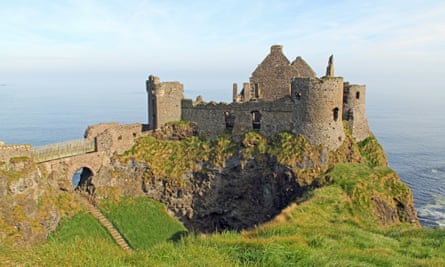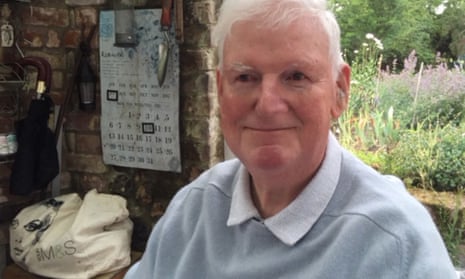Through his book The British Isles: A History of Four Nations, Hugh Kearney, who has died aged 93, sought to alter the way the islands’ occupants viewed their past. Before its publication, in 1989, the writing of the histories of England, Ireland, Scotland and Wales had tended to be separate, narrowly national projects, with that of England given primacy. Hugh adopted a quite different perspective.
He maintained that key events from the Roman conquest, Viking invasions and the Norman conquest to the civil wars of the 17th century and the Industrial Revolution affected the region as a whole, transcending “the national boundaries of a later date”. His challenge to the prevailing anglocentricity was better appreciated by the time of the book’s second edition (2006). The pan-Britannic perspective he took of the whole archipelago, from prehistory to the present day, has become ever more relevant for contemplating the current state of relations within these islands, and between them and the European Union.
His final book, Ireland: Contested Ideas of Nationalism and History (2007), contains reprints of many of his challenging articles on Irish history, revolving inescapably around Anglo-Irish relations and based on voracious reading transcending disciplinary and national boundaries, not least on the role of nationalism in eastern Europe. He poses questions of enduring relevance. Who is included in the Irish nation? How do its borders relate to religion, ethnicity, languages and civic commitment? How should its history be taught? However much scope remains for other interpretations, and for all the short-term fluctuations in the fortunes of the four nations, and mutations of their political cultures, Hugh’s probing approach will not go away.
Born in Liverpool, itself a national and religious crossroads, Hugh was the son of Hugh Sr, a first world war ambulance driver who went on to work for the Co-op, and Martha (nee Thomas), who ran a number of market stalls.

He attended St Francis Xavier college, from where he won a scholarship to Peterhouse, Cambridge, starting on his history studies in 1942. There his awareness of diversities was further stimulated by Herbert Butterfield, author of The Whig Interpretation of History, which criticised the tendency of historians “to produce a story which is the ratification if not the glorification of the present”. He graduated after second world war army service and a return to Cambridge.
After working for Manchester University Press, in 1950 Hugh became a lecturer at University College Dublin. His colleagues there included Dudley Edwards and Desmond Williams, and I heard his lectures – models of how to inspire students, through an almost casual conversational style, to think for themselves, and engage with all sides before venturing to a conclusion.
There he met Catherine (Kate) Murphy, a student from Tyrone, Northern Ireland. They married in 1956, and had three children, Martha, Jamie and Peter. Family holidays were often spent tramping through wet fields in search of dolmens and standing stones. Hugh had a passion for exploring historic sites such as Dunluce Castle, in Co Antrim, which came to provide the cover picture for the first edition of The British Isles. Symbolic of what seemed to him a complex web of identities, it was the seat of the MacDonnells, who had Viking forebears, were earls of Antrim and cousins of the MacDonalds of Scotland, and in 1644 sent troops in support of Charles I.
At UCD, Hugh embarked on research, which included learning Irish. The publication of his thesis, Strafford in Ireland 1633-41: A Study in Absolutism (1959), did much to transform views of Thomas Wentworth, Earl of Strafford, who was appointed lord deputy (ie governor) of Ireland by Charles I, but ultimately impeached and executed for his tyrannical conduct.
This reassessment not only had consequences for the historiography of Stuart Ireland, but required significant rethinking of the origins of the English civil war. Strafford’s role emerged as far less benign than it often had in previous accounts that relied on his own testimony.
A series of positive reviews by both English and Irish scholars doubtless contributed to Hugh’s appointment in 1962 as a lecturer at the new University of Sussex. There the collaborative and trans-disciplinary approach to teaching fostered under Asa Briggs allowed his disposition towards deep reading in literature, as well as in history, to flourish. In teaching, as in writing, he stuck to his observation in the preface to Strafford that “conflicting interpretations are a commonplace of historical writing, but once their existence is recognised, the historian is no longer free to adopt the simplicity of one point of view alone”. His interests broadened in this stimulating environment, and two more books resulted: Scholars and Gentlemen: Universities and Society in Pre-industrial Britain, 1500-1700 (1970) and Science and Change, 1500-1700 (1971).
In 1970 he went to Edinburgh University as professor, but after the flexibility of Sussex, he found the rigidity of hierarchical status and disciplinary boundaries deeply frustrating. Hugh’s gentle disposition could conceal an intense ambition to push back the frontiers of historical understanding and, after five years, his preference for collegiality and inter-disciplinarity took him to the University of Pittsburgh, where he had already been a visiting professor. There he did much of the reading for The British Isles, and found much satisfaction in a department that was a pioneering centre of social history.
Following his retirement in 1999, he and Kate moved to Bury St Edmunds, in Suffolk. She and his children survive him.

Comments (…)
Sign in or create your Guardian account to join the discussion